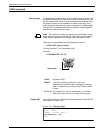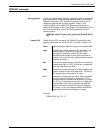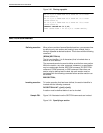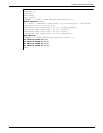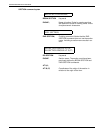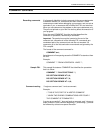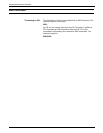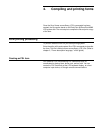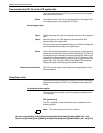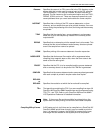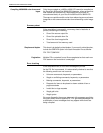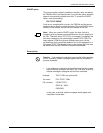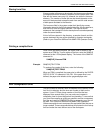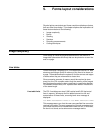
COMPILING AND PRINTING FORMS
4-2 XEROX DOCUPRINT 96/DOCUPRINT 96MX LPS FORMS CREATION GUIDE
Communicate the FSL file to the LPS system disk
Once you have created the FSL file, you can send it to the system
disk either offline or online.
Offline In the offline mode, FSL files can be transmitted to the system disk
from magnetic tape or by using the LPS Editor.
Using magnetic tape
Step 1. Create the source file at the host computer and store it on a magnetic
tape.
Step 2. Mount the tape on the LPS tape drive and transmit the files
electronically to the system disk.
The source code can be entered directly to the LPS at the keyboard
and transmitted electronically to the system disk.
Online If your LPS is channel-attached to a host computer, enter the source
code at the host terminal through the host editor facility. The file must
be preceded by the necessary control record identifiers. Refer to your
host reference documentation for details. The LPS Hostcopy utility
enables you to download files from the host to be stored on the LPS
system disk. Your
DocuPrint 96/DocuPrint 96MX LPS Operations
Reference
explains the Hostcopy commands in detail.
Remote communications The LPS can also receive forms data from a remote device on the
Ethernet network.
Compiling a form
Once the file has been created, the next step is to enter the command
that causes the source file (FSL) to be compiled into an object file
(FRM).
Invoking the forms compiler
To invoke the forms compiler, enter the following command at the
LPS keyboard:
FDL [parameters]
The FDL compilation command includes any combination of the
following options.
Note: The entire command must fit on one line.
FDL [filename][,NOPRINT][,TRAY][,DEBUG][,XPAN][,NOSOURCE][,PROOF][,SIMPLEX]RES={300 | 600}]
FDL[filename][,NOPRINT][,TRAY][,DEBUG][,XPAN][,NOSOURCE][,PROOF][,SIMPLEX]RES={300 | 600}][,TDn]



